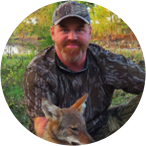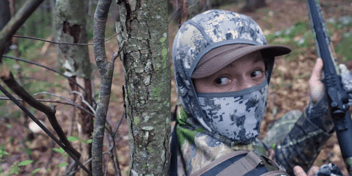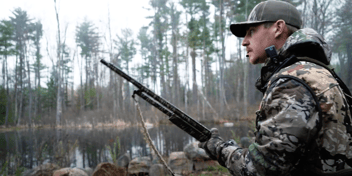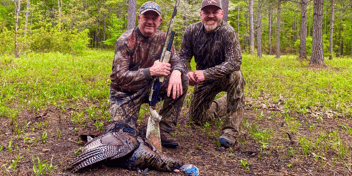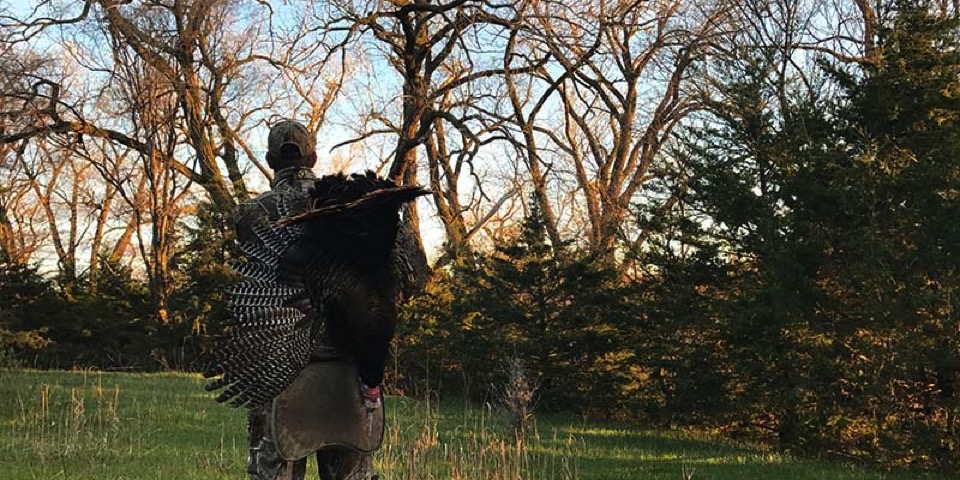
If you’ve hung out in turkey camp any length of time, you’ve most likely heard the phrase, “Roosted is Roasted.” It’s the phrase turkey hunters will use when they’ve got a bird roosted right where they want them the night before the hunt. That bird is as good as dead, right? And while “Roosted is Roasted” actually works out far fewer times than we care to admit, my recent turkey hunt proved that sometimes a roosted bird is as good as money in the bank. Especially when that bird is roosted in Nebraska.
Our first hunt of the trip found me and a couple of buddies tucked up under a cedar tree, 30 minutes before daylight, riding out the nastiest thunder and lightning storm I’ve ever hunted.
We came to the spot extra early because my buddy, Marty, knew exactly where the birds were roosted. He had watched them fly up the night before to ensure that we’d be in the right spot for the morning hunt. “We’re gonna set up within 50 yards of the roost tree,” Marty said, as he told us about the morning’s setup.
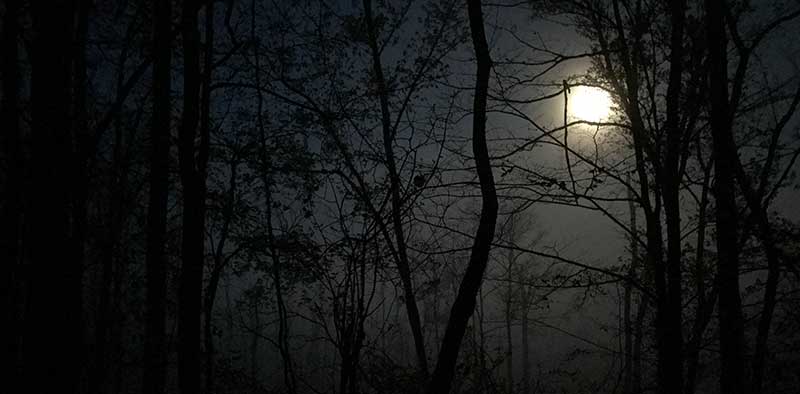
Slip in close to the roost trees nice and early, and you’ll be in the hot seat for the greatest hunt of your spring turkey season.
It’s amazing what grown men will endure for the chance to shoot a turkey. Lightning struck around us so close, and I was afraid to lean back against the barb-wire fence behind me, but we knew if we could just hold tight, we’d be in for a treat.
Sure enough, shortly after the storm passed through, birds began to pitch down from the roost. Several hens hit the ground within 30 yards of our setup. Finally, the boss flew from a tree 20 yards behind us and landed 30 yards to our right. His feet weren’t on the ground 30 seconds before Marty maneuvered into position and helped that gobbler meet his maker.
My turn would come next. And a similar scenario play out as we got on a bird that Marty had roosted the night before. He knew where this bird was – and better yet, where he was headed when he hit the ground. Soft and sweet calls brought the longbeard my way. He tried to skirt our calling set, but he didn’t stay out far enough. I let the Mossberg 535 turkey gun bark, sending a turkey load to the old bird’s noggin’.
535 ATS Tactical Turkey Shotgun (#45239)
The bird appeared to be a Rio/Eastern hybrid with some of the craziest wing feathers I’ve ever seen in 20+ years of turkey hunting. We had weathered the storms and killed two great birds shortly after they left the roost.
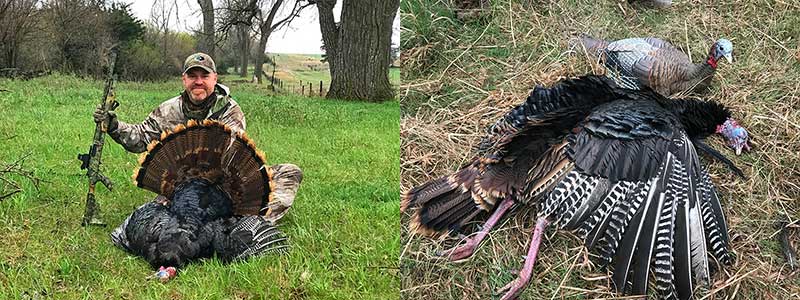
On the ride back to camp, Marty shared that he had a friend coming into town, and they’d be hunting a spot that had 8 longbeards hanging out on it. Typically when I hear something like that, I automatically assume that the teller of the story is full of bull. But I knew that Marty was legit. I asked him if I could tag along with a camera to record the action, and he was all for it. Little did I know that we were in for a turkey hunt that most hunters only dream about.
The next morning came quick and found three of us guys at a different farm, tucked up under another big cedar tree. We were just 50 yards from what appeared to be a flock of 15 birds roosted in the trees. We had glassed the birds from a distance on the way in but really couldn’t separate the boys from the girls in the dark.
As the day began to break and songbirds started their singing, the turkeys in the trees next to us came to life. One gobbler broke the silence, followed by every tom in the tree letting the hens know they were alive and well. When one bird gobbled they all gobbled. There were jakes, longbeards, and a pile of hens. When they all began to cut up it turned into a frenzy.
As soon as there was enough light to see, the gobblers began to pitch down in the pasture in front of us. Not willing to miss out on the action, each gobbler hustled to the ground and immediately began to strut. The gobblers impatiently waited, gobbled, and watched as the hens flew down to them. It was the most action-packed fly-down I’ve ever seen in my years of turkey hunting. And it was all taking place just 65 yards in front of us.
When the whole flock was on the ground, there were 8 longbeards, a number of jakes, and not enough hens to go around. We watched all the action for nearly 10 minutes before the flock slowly began to move from left to right in front of us. When we realized they weren’t coming any closer, and would soon skirt our setup, Aaron, the shooter on this particular hunt, decided it was time to pull the trigger. Birds scattered in every direction at his shot, but one bird wouldn’t make it away.
We watched the flock clear the field before we jumped up to retrieve Aaron’s bird. It was a beautiful sight to see the sun rising with strutters doing their dance on the horizon. The day was just beginning, but our hunt was already ending. Another bird had met his match shortly after flying off the roost.

There’s nothing like punching a turkey tag at sunrise.
Our first two mornings in Nebraska proved that roosted is roasted when you’re in exactly the right spot in a gobbler-rich environment.
While Turkey season is near complete in most states, to follow are 5 ways to kill a bird at flydown. Keep these in mind while you prepare for next year's hunts.
1. Know what tree he is in
It sounds kind of obvious, but you really need to know exactly where he’s hanging out the night before your hunt. This eliminates all the guesswork of where on the farm your hunt will begin.
2. Know where he’ll hit the ground
Turkeys are creatures of habit. Until disturbed, they’ll often do the same thing over and over again each day. Before you move in for the kill, watch for a pattern on how the birds fly down. Find where that bird’s feet hit the ground first. That’s the X.
3. Get in early
I’m not talking about just before daylight, early. I’m talking about slipping in before the flock is even awake, early. This may be 45 minutes, or more, before daylight. It sounds crazy, but you can literally slip into his bedroom, and he’ll never know you’re in the world. Be waiting at the X before the flock comes to life.
4. Listen to their language
Turkeys will tell you when they are about to fly down. Their vocals intensify, and the excitement literally spills over to the fly down. When you hear those hens fire up, you better get ready. It’s about to go down.
5. Have your gun ready and waiting when the birds hit the ground
I’ve seen more hunts blown by hunters that got caught with their guns down. They got so caught up in the action and watching the show that they failed to prepare for the shot. Don’t get caught with your gun laying across your lap when that gobbler’s feet hit the ground.
Take advantage of the gobbling frenzy and birds in flight to make sure your gun is upon your knee and pointed at that bird’s face when he hits the ground and looks in your direction.
About the Author
